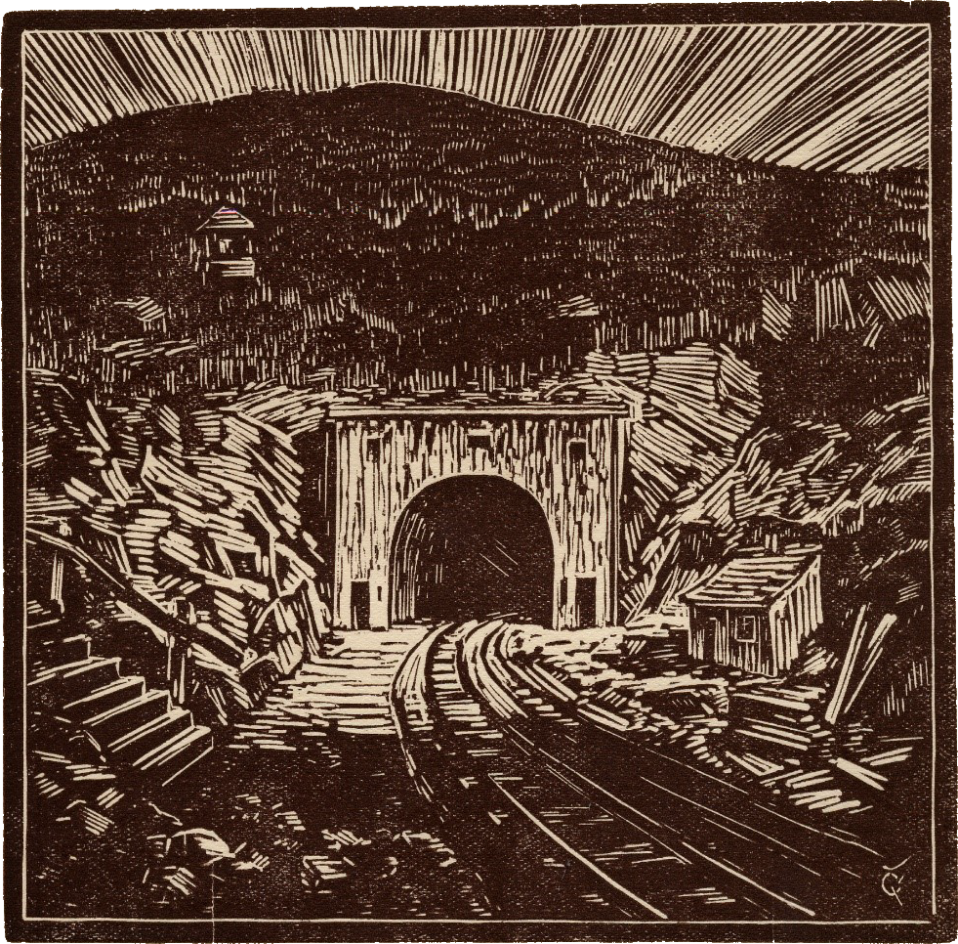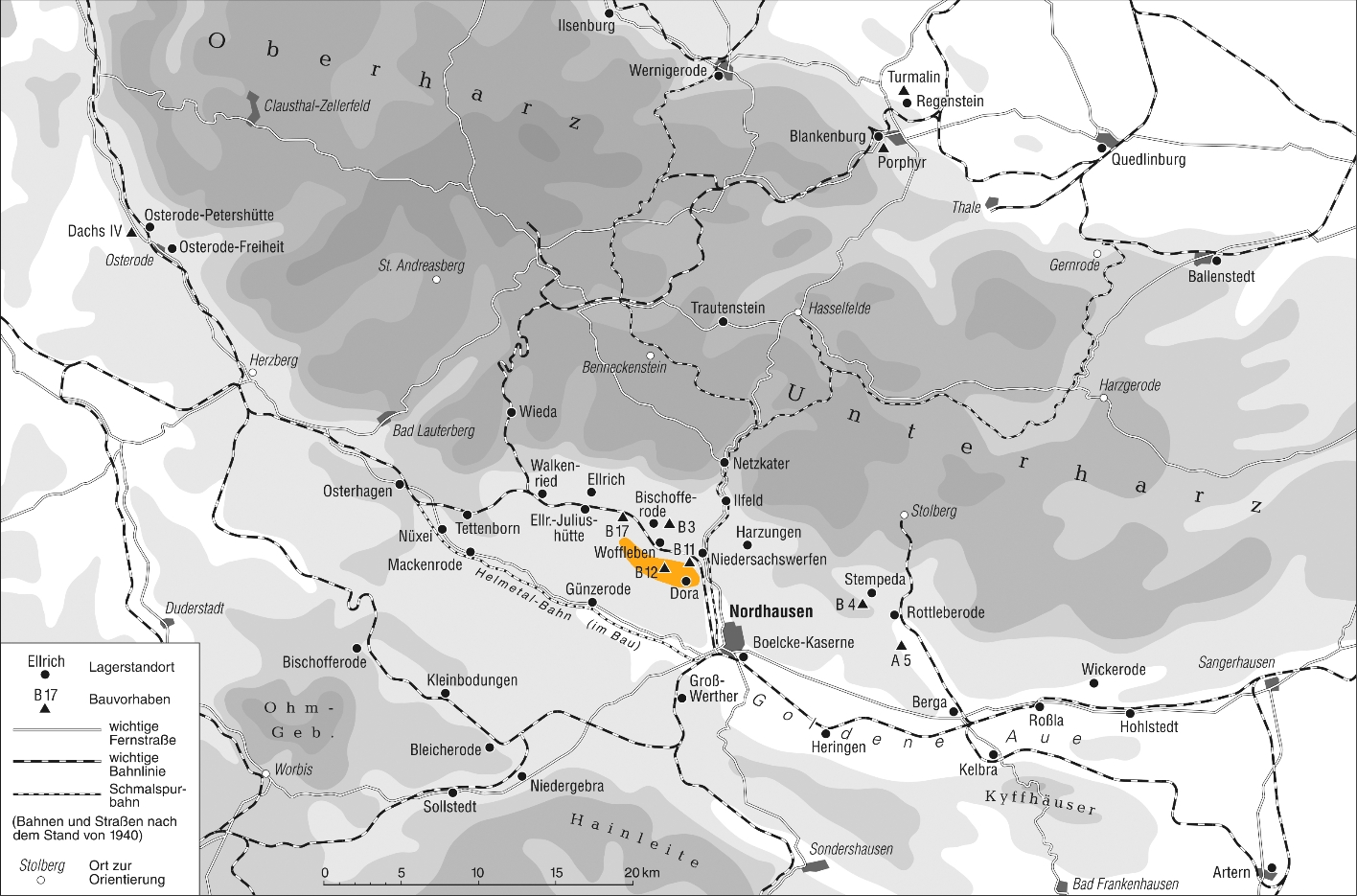
Woodcut by the Czech inmate Dominik Černý, 1953
(Mittelbau-Dora Memorial)

(Graphic: Jens Borleis, Mittelbau-Dora Memorial)
Since the mid-1930s the Wehrmacht had maintained a depot for fuel and lubricating oil in an underground gypsum mine in the Kohnstein near Nordhausen. The depot was strategically positioned in the middle of the Reich and was owned by the "Wirtschaftliche Forschungsgesellschaft" (WiFo), a Reich-owned company for storing oil and fuel for the war.
In the days after the bombing of Peenemünde, the SS, Ministry of Armaments, and the Army quickly settled on the facility. Most of the tunnels were still accessible, and were to be converted into an underground rocket factory by concentration camp inmates.
Later, the entire armament production of the Reich was to be moved underground. A sprawling concentration camp complex was established in the Southern Harz. The facility in the Kohnstein became a model for other facilities.

